Three stars that once belonged to Orion flew the coop millions of years ago, but you can catch up with them with binoculars on the next clear night.
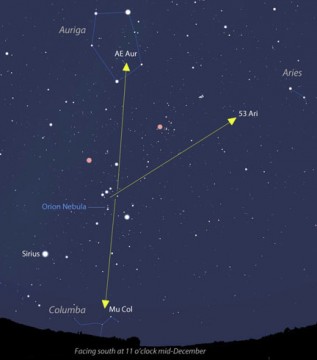
Stellarium
Imagine sinking three balls on the break in a game of eight-ball. Plunk-plunk-plunk! Something similar happened in a game of stellar billiards 2.5 million years ago. Either a supernova exploded or gravitational interactions between pairs of binary stars launched three white-hot suns from their home near the nascent Orion Nebula into three different "pockets" of the Milky Way galaxy.
2.5 million years later, AE Aurigae, Mu Columbae and 53 Arietis occupy opposite ends of the fall-winter sky, but their "runaway" speeds and common origin cue us in on their former partnership even if we're not exactly sure what initiated the "break".
All three are fiercely hot, main sequence Class O or B stars far more massive and luminous than the Sun, with distances of 1,500 light-years for AE Aur, 1,300 for Mu Col, and 800 for 53 Ari. AE Aur and 53 Ari shine around magnitude +6.0, with Mu Col at +5.2, making the trio easy pickings in any pair of binoculars. From dark skies, they're all faintly visible with the naked eye.
Not only do Mu Col and AE Aur share the same 230,000 mph (100 km/sec) space velocity, they're racing away from one another in almost exactly opposite directions. Just as we trace meteor trails backwards to their radiant, we can trace the paths of Mu Col and AE Aur 2.5 million years back in time. They "meet" in the rich, star-forming regions highlighted by today's Orion Nebula. Today, they're 1,600 light-years apart. Back then, the nebula had only begun to emerge from darkness, awoken by the flickering light of its earliest suns.
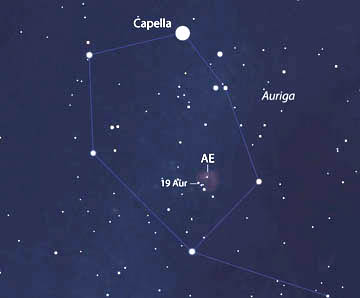
Stellarium
Meanwhile, 53 Arietis pads to the northwest at less than half the speed of either Mu Col or AE Aur. Yet it traces its origin back to the very same Orion star-forming region, albeit deeper in the past, having been ejected on its current path 4-5 million years ago.
So what caused the three to abruptly pick up and leave the scene? A supernova explosion might have sent the stars reeling in opposite directions, but recently discovered evidence points to gravitational interactions within a compact star cluster. It's thought that Mu Col and AE Aur once shared company as a binary system that collided or strayed too close to another binary pair. Complicated gravitational interactions ensued, breaking the binary's bond and flinging the stars into space as "runaways" while leaving the other binary intact, still lurking near the scene of the crime.
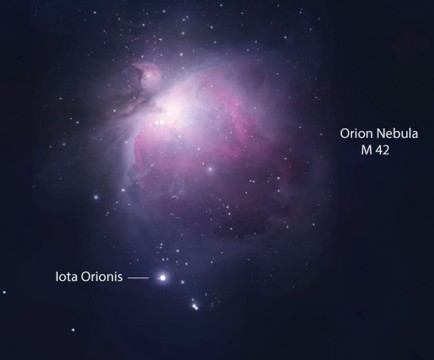
Stelllarium
If you've ever observed the beautiful, 3rd-magnitude triple star Iota Orionis located just south of the Orion Nebula, you've caught the culprit red-handed. Besides its telescopic partners, Iota also possesses a massive, spectroscopic companion that revolves around the primary star in a highly eccentric orbit with the same velocity as runaways Mu Col and AE Aur. This and its location are important clues that tie Iota Ori to its distant cousins.
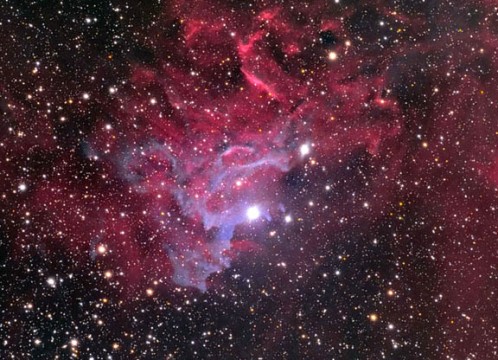
Hunter Wilson
A closer look at AE Aur reveals a further consequence of getting booted from Orion. It's currently passing through and illuminating a large 50′ x 30′ wide gas cloud named the Flaming Star Nebula or IC 405, located about 40′ northwest of 5th-magnitude 19 Aur in the southern half of Auriga's pentagon.
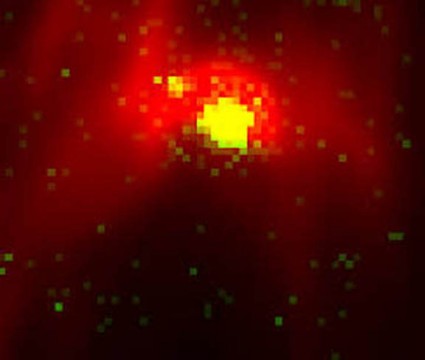
NASA / WISE spacecraft
We know the star only recently entered the nebula because a nearby dust cloud currently lit up by AE Aur would otherwise have been ripped apart by its powerful stellar winds. Astronomers have also discovered bow shocks in both infrared and X-ray light as the star plows through the gases and dust at three times the speed of the nebula itself. Eventually, it will depart IC 405 and the Flaming Star Nebula will flame no more.
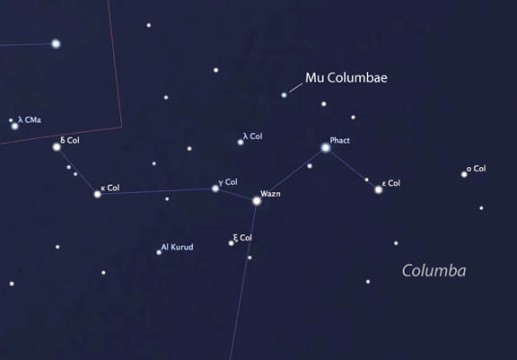
Stellarium
Before it goes poof, you can see it for yourself on a dark, moonless night using an 8-inch or larger telescope. It's a mix of reflection (dust) and emission nebulosity that responds well to a high-contrast UHC or O III filter. I can easily see a faint but obvious diffuse glow to the north and east of AE Aur in my 15-inch (37-cm) at 64x using an O III filter. Others have spied it in smaller instruments. It's fun to contemplate the twist of fate that made it illuminate.
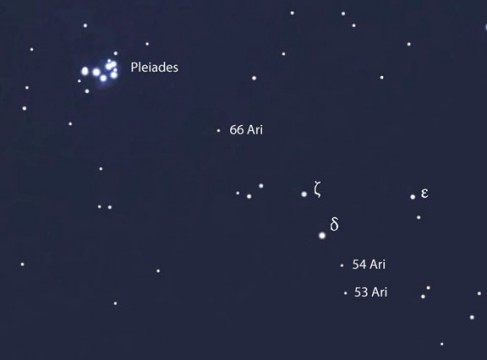
Stellarium
All three runaways can be apprehended with binoculars when Orion stands high in the south around 11 o'clock in mid-December and 9 o'clock in mid-January.
 0
0
Comments
You must be logged in to post a comment.